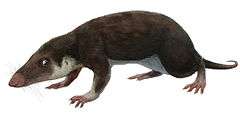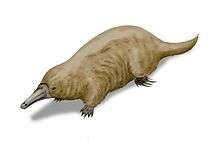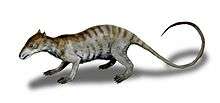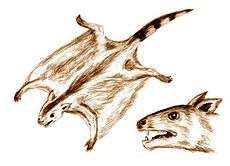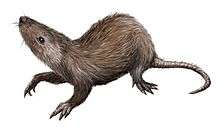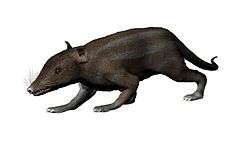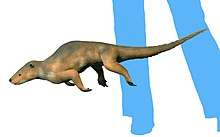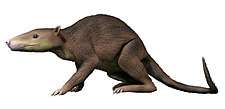Buxolestes
Buxolestes is an extinct genus of semi-aquatic, non-placental eutherian mammals belonging to the family Pantolestidae. Species in this genus were part of the first placental evolutionary radiation during the Middle Eocene (50-40 mya).
| Buxolestes | |
|---|---|
| B. minor from Messel Pit Fossil Site at the Naturmuseum Senckenberg | |
| Scientific classification | |
| Kingdom: | |
| Phylum: | |
| Class: | |
| Order: | |
| Suborder: | Pantolesta |
| Family: | |
| Subfamily: | Pantolestinae |
| Genus: | Buxolestes Jaeger, 1970 |

Description
Buxolestes were otter-like freshwater fish predators with a body length reaching about 46 centimetres (18 in) and a tail about 35 centimetres (14 in) long. They were significantly smaller than most living species of otters. Fossilized stomach contents confirm their semiaquatic freshwater habits. The anatomy of these archaic "insectivorous" mammals is known through well-preserved Middle Eocene specimens found at Messel in Germany. Their structure evidences a clear adaptation to a semiaquatic way of life. The forelimbs and hindlimbs are powerful and show strong claws. The tail is clearly fit for swimming. The skull is long, with large molars that appear to be adapted to a diet of molluscs with shells (freshwater clams and freshwater snails), but the predilection postulated from the dentition has not been confirmed.
Species
- Buxolestes minor Pfretzschner 1999
- Buxolestes piscator Koenigswald 1980
